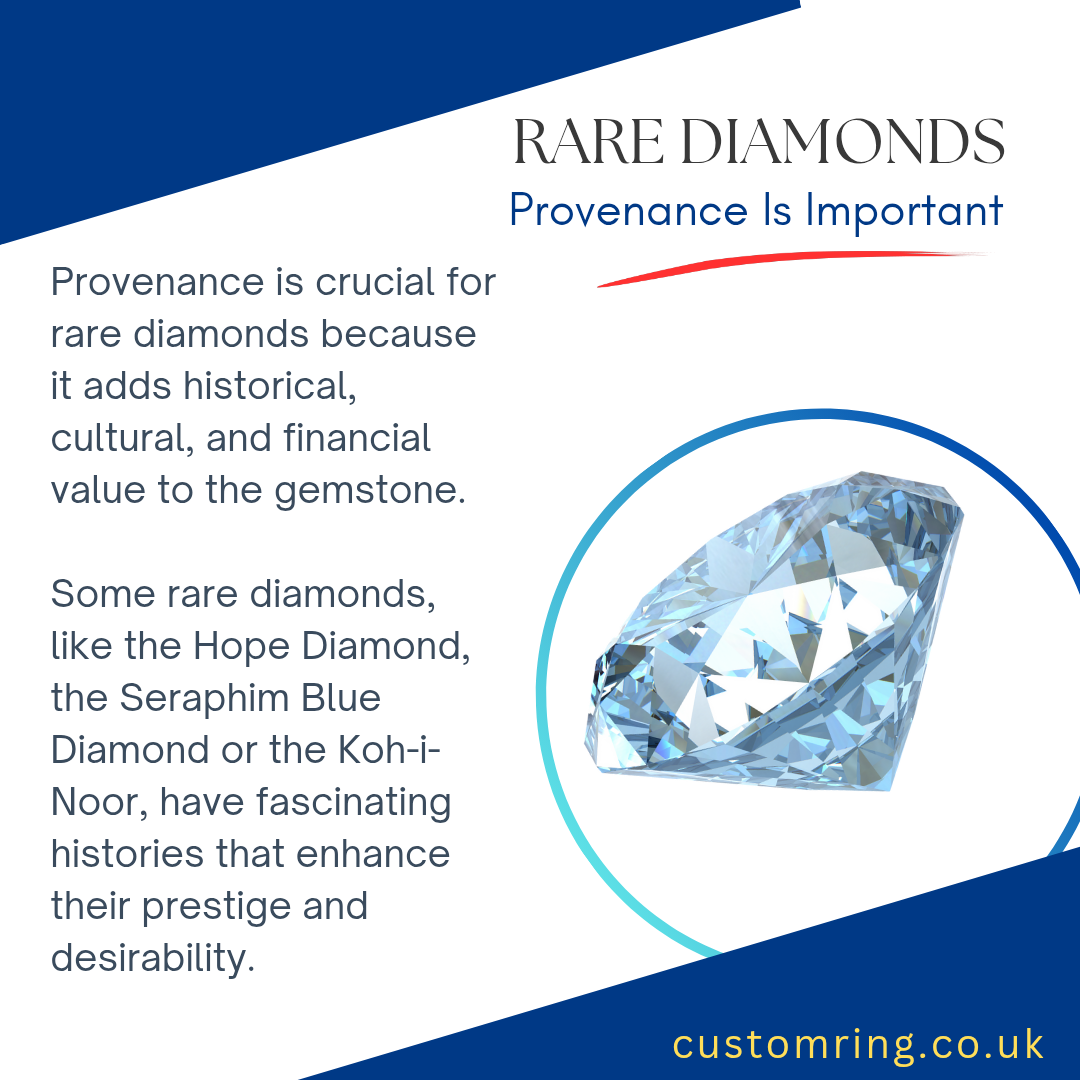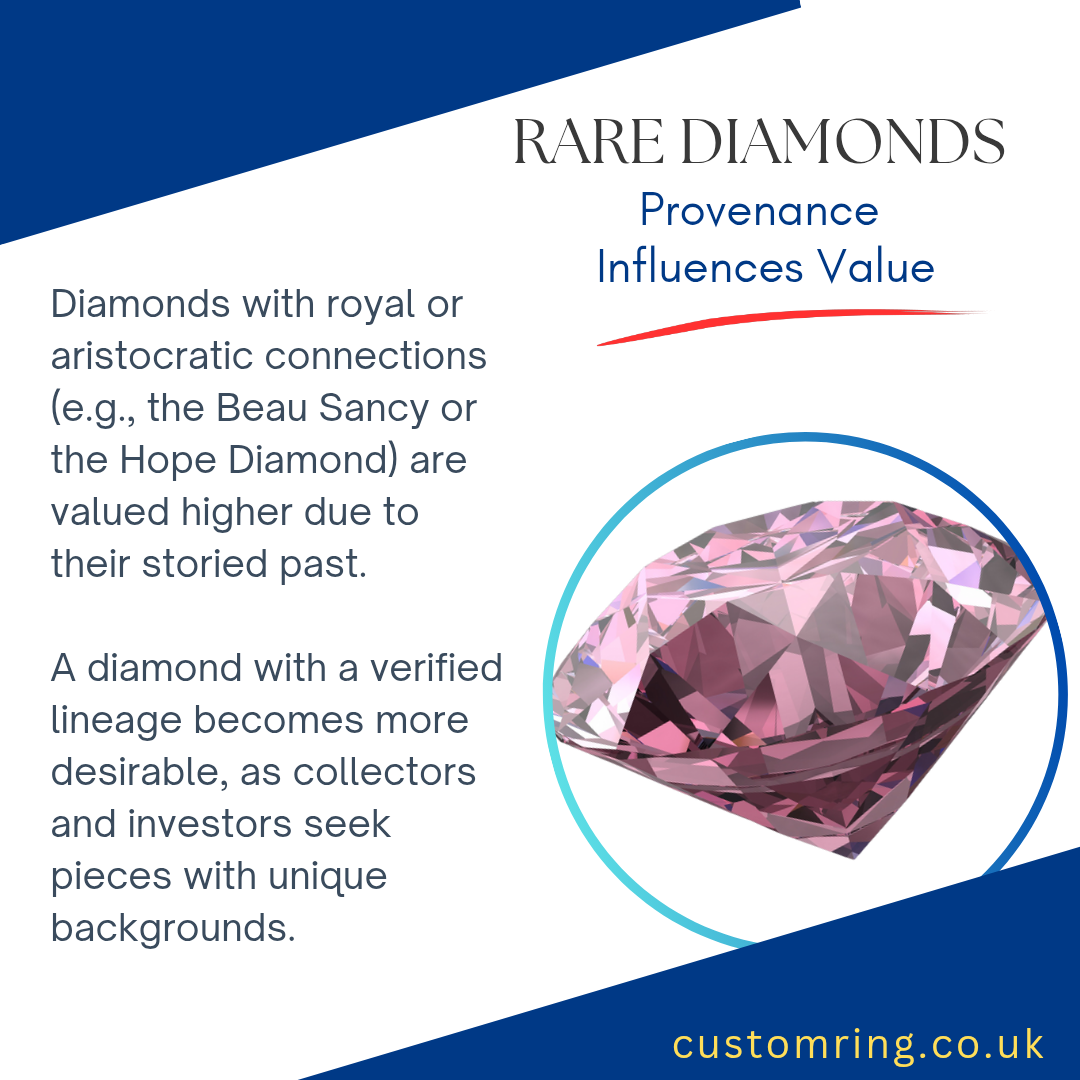Rare Diamonds And Provenance
In the context of rare and historic diamonds, ‘provenance’ refers to the documented history of a diamond’s origin, ownership, and journey over time. It includes details such as where the diamond was mined, who has owned it, any significant historical events associated with it, and any notable modifications or settings it has undergone. Ownership by royalty, exposure at renowned museums etc. strengthen the provenance of a diamond.


IMPORTANCE OF PROVENANCE
Diamonds with royal, celebrity, or historically significant ownership often command higher prices. An example is diamonds from the Golconda mines in India that, were at some point in time owned by the Nizams ruling the province.
A well-documented history helps verify that the diamond is genuine and has not been altered or replaced. Diamond collectors prefer to purchase historic and expensive diamonds, from prominent auction houses like Christie’s and Sotheby’s. The buzz in auction circles is generally louder when, these auction houses announce major diamond auctions.
It is not uncommon for the story of a diamond to be unveiled only, when the precious stone makes its auction debut. Two classic instances come to mind, the first relates to strong rumors about a vivid pink diamond from the Golconda mines, the stone is believed to be in the collection of a sheikh in one of the oil rich Arab nations. Strong indications about another fancy vivid blue diamond also from the Golconda mines, currently in the collection of a Russian collector, have put the auction houses on alert. Reference is likely to be related to the Seraphim Blue Diamond, the diamond first surfaced during the reign of the first Nizam (Mir Qamar-ud-Din Khan, Asaf Jah I) of Hyderabad and is believed to have exited the collection of the Nizams, during the reign of the second Nizam (Mir Nizam Ali Khan, Asaf Jah II).
The journey of a diamond through different eras and owners adds to its mystique and desirability. Two diamonds with very similar features are often differentiated by an interesting and true story, that is related to one of the diamonds.
Some rare diamonds have fascinating histories, such as the Hope Diamond, the Seraphim Blue Diamond or the Koh-i-Noor. A documented past can make the diamond more valuable than just its carat weight or clarity. Unless put up for display at prominent museums, rare diamonds have been seen by very few people.
Collectors and investors pay a premium for diamonds with a strong provenance, knowing that their historical importance will likely drive up future value. Diamonds with verified provenance often fetch record-breaking prices at auctions, as they come with a story that intrigues collectors and connoisseurs.
GOLCONDA DIAMONDS
Golconda diamonds which form some of the most historic and coveted diamonds - in private collections are often difficult to track and trace due to their discreet ownership, lack of public records, and centuries-old transfers. Unlike museum-held or auctioned diamonds with well-documented provenance, many Golconda diamonds have changed hands privately, sometimes without proper documentation.
The Golconda mines in India are dormant and depleted, this keeps the demand for Golconda diamonds mined centuries ago at an all time high. Typical to dealings in expensive merchandise, quite a few diamonds from Golconda are likely to have changed hands without, any recorded transactions. We first heard about a priceless pink diamond and the Seraphim Blue diamond a few years ago - important to clarify that they have never, come up for any major auction. Some top level diamond collectors have hope, others brush the information as baseless.
NOTE
Customring.Co.Uk does not have any commercial interest in the diamonds mentioned in this report. The report has been compiled for general information and we do not have dealings with Sotheby's or Christie's. Rare diamonds like the Hope Diamond, Seraphim Blue Diamond and the pink diamond from the Golconda mines mentioned above - are not up for sale. We do not make any prediction of price per carat and request interested viewers, to track the history and present location of these and other diamonds.